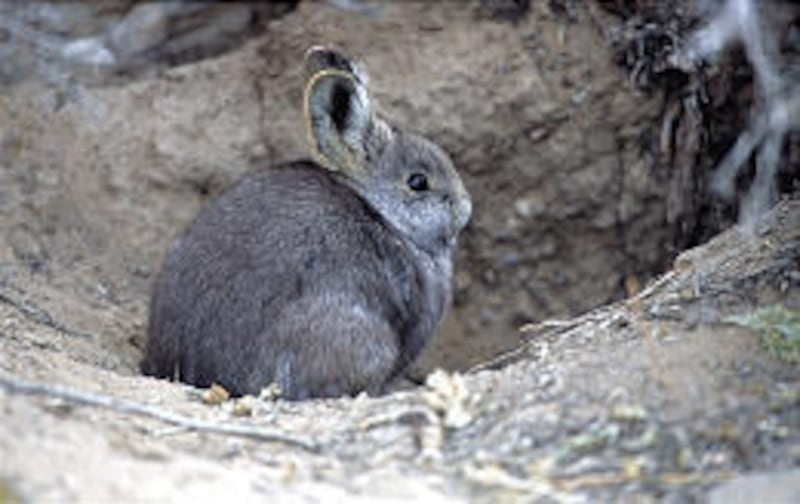From pygmy rabbits to sage grouse, Utah's wildlife benefits from a partnership involving the federal and state governments, hunters, fishermen, environmentalists, scientists and local officials, according to wildlife experts.
The partnership is under a national blueprint titled Wildlife Action Plans. On Wednesday, Interior Secretary Gale A. Norton said plans from all states and six U.S. territories had been submitted to the department and all were approved.
The International Association of Fish and Wildlife Agencies said Utah was one of the first states to win approval for its plans.
Acceptance of the comprehensive plans allows states and territories to continue receiving grants under the State Wildlife Grant program, set up in 2001. The Fish and Wildlife Service has already provided $400 million in grants for conservation work, according to the department.
The Fish and Wildlife Service is to distribute $63.2 million in grants next spring.
In a telephone press conference, Norton noted that last year President Bush signed an executive order directing the Interior, Defense and Agriculture departments, plus Environmental Protection Agency, to work together on conservation.
"We all recognize that the federal government cannot do it alone," she said. "We cannot conserve and protect everything" needing such protection. The federal government needs to work with states, Indian tribes, conservation groups and others to make the plans work, Norton added.
Besides the $400 million that the Fish and Wildlife Service has provided so far, states have matched the amount with $200 million, she said.
Thousands of people worked to script the action plans, said Norton said, including farmers, community leaders, wildlife experts, conservation groups and government officials.
"The completion of these state wildlife plans means far greater collaboration, greater participation and greater conservation," Norton said.
Utah officials said the state has received $872,158 under the plan for the fiscal year that started July 1. Exact figures for the state's contributions were not immediately available.
The state's biologists were already carrying out work that would later become part of the action plan, says an e-mail from Mark Hadley, DWR spokesman.
Dana Dolsen, planning manager for the DWR, said in some cases it's important to remove sagebrush and improve plant diversity, and at other times wildlife managers are working to restore sagebrush.
They especially want to regenerate sagebrush where the plant is needed by wildlife, in areas where sagebrush die-offs happened because of drought or wildfire, Dolsen said in a telephone interview.
According to the release, the state's actions include:
Studies to learn more about the pygmy rabbit, "a small, secretive rabbit that relies on sagebrush" in southwestern Utah. Under the program, for the past three years biologists have been hiking in southern Utah to find out more about the elusive animal.
"Many locations where pygmy rabbits were observed in the past no longer support them, often because the sagebrush habitats have been destroyed or are no longer healthy," the DWR said. "However, pygmy rabbits also have been found in many localities where biologists didn't know the rabbits lived."
Habitat changes in northeastern Utah, designed to improve the chances of sage grouse and elk.
Reintroduction of spotted frogs in areas they historically occupied in the wet meadow areas of Swaner Nature Preserve in Park City. In May 2003, the first reintroduction of Columbia spotted frogs in the country occurred, with 4,000 to 5,000 tadpoles released into the wet meadow, the DWR reported.
Helping bison and deer in the Henry Mountains of southeastern Utah. In July 2003, lightning started a fire on Bulldog Ridge, and by the time it was out, about 31,000 acres of vegetation was wiped out. The DWR has been working to revegetate the state land.
By this year, DWR biologists found dramatic improvements. "The amount of biomass on the fire (area) has increased exponentially!" wrote Leroy Mead, the DWR's project leader, quoted in the release.
"As I walked through each of the sections we treated in a state of euphoria, I was simply amazed at the success of the treatment! Never in my wildest dreams could I have hoped for anything better!"
About 60 bison were feeding on one of the state sections that had been treated, according to the report. Mead found many wild animals and livestock in the revegetated areas.
E-mail: bau@desnews.com


